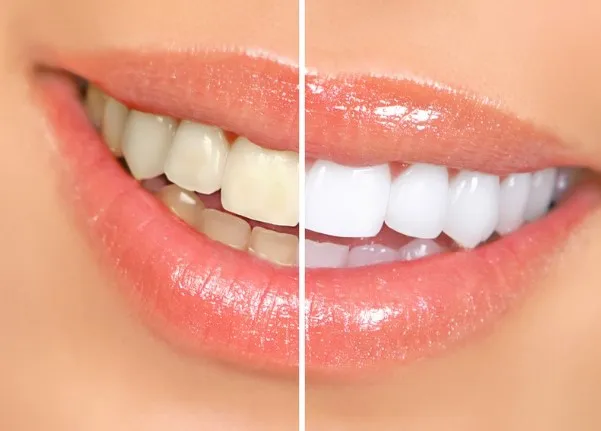Your cart is currently empty!
How Long Does Teeth Whitening Last?

Everyone desires a bright, radiant smile, but natural teeth often fall short of the Hollywood sparkle. Whether you choose at-home teeth whitening products like strips and gels or go for professional dental whitening, the results—while impressive—aren’t permanent.
In this guide, we’ll explore how long teeth whitening lasts, the differences between treatment types, and tips to extend your results.
How Long Does Teeth Whitening Last?
The longevity of your teeth whitening results depends on two major factors:
- The type of whitening treatment used
- Your oral hygiene and lifestyle habits
Generally:
- At-home whitening results can last from a few months up to a year
- Professional, in-office treatments can last up to 2–3 years
Remember, whitening removes existing stains—it doesn’t prevent new ones. That’s why maintaining good oral hygiene and avoiding staining foods and drinks is essential.
Types of Teeth Stains: Intrinsic vs. Extrinsic
Understanding the type of discoloration can help you choose the most effective whitening method.
- Intrinsic stains (internal): Caused by aging, medications, trauma, or infection. Harder to remove but treatable with professional whitening.
- Extrinsic stains (external): Caused by coffee, tea, wine, or tobacco. Most over-the-counter products work best on these surface stains.
How Long Do Different Whitening Treatments Last?
1. Whitening Toothpaste
- Visible results: In 2–6 weeks
- Effects last: Up to 3–4 months
- Best for: Mild surface stains
- Active ingredients: Hydrogen peroxide, carbamide peroxide, or mild abrasives
Note: Long-term use may thin enamel. Alternate with enamel-protecting toothpaste if sensitivity occurs.
2. Whitening Mouthwash
- Visible results: In 2–3 months
- Effects last: Short-term
- Best used as: A maintenance product after other whitening treatments
- Contains: Hydrogen peroxide (in lower concentrations)
3. Whitening Strips
- Visible results: After a few applications
- Effects last: Up to 6 months
- Best for: Moderate extrinsic stains and mild intrinsic discoloration
- May include: LED lights for enhanced whitening
Over-the-counter whitening strips are one of the most effective non-prescription options.
4. Whitening Pens
- Visible results: In 2–7 days
- Effects last: A few days to a week
- Best for: Spot treatments and on-the-go touch-ups
Avoid eating or drinking for an hour after use to allow the gel to work effectively.
5. At-Home Whitening Gel Trays
- Visible results: In 1–2 weeks
- Effects last: Up to 1 year or more (when dentist-supervised)
- Best for: Long-term, safe whitening under professional guidance
Custom trays made by your dentist offer more precision and stronger results than over-the-counter versions.
6. Chairside (In-Office) Whitening
- Visible results: Immediate
- Effects last: 1–3 years
- Best for: Deep intrinsic stains or patients seeking dramatic results
This professional treatment uses highly concentrated bleaching agents—often activated by light or heat—for fast, noticeable results.
Potential Side Effects of Teeth Whitening
While most whitening treatments are safe, they may cause temporary issues such as:
- Tooth sensitivity
- Gum irritation or burns
- Mild stomach upset (if product is swallowed)
- Gum bleaching (temporary discoloration)
- Enamel wear (from overuse of abrasives or strong peroxides)
If you experience tooth pain, extreme sensitivity, or gum discomfort, stop treatment and consult your dentist.
Why Do Teeth Become Discolored?
Common causes of yellow or discolored teeth include:
- Staining foods and beverages (coffee, tea, red wine, cola)
- Tobacco use (smoking or vaping)
- Poor oral hygiene
- Aging and genetics
- Certain medications (e.g., tetracycline during tooth development)
- Trauma or infection
Tips to Maintain White Teeth
Follow these oral care and dietary habits to keep your smile bright:
Oral Hygiene Tips:
- Brush twice daily with a fluoride or whitening toothpaste
- Floss daily to remove plaque between teeth
- Brush or rinse after consuming staining foods
- Use whitening mouthwash or gum for maintenance
Diet Tips:
Avoid or limit:
- Coffee and black tea
- Red wine and grape juice
- Cola and other dark sodas
Rinse with water or chew sugar-free gum after consuming staining items
Include crunchy fruits and veggies in your diet to naturally scrub teeth
Final Takeaway
Teeth whitening isn’t permanent, but it can deliver long-lasting brightness—especially with the right method and aftercare. While at-home options like whitening toothpaste, strips, and pens can offer short-term improvements, professional treatments provide deeper, longer-lasting whitening.
To make the most of your results:
- Choose the right whitening method for your stains
- Practice good oral hygiene daily
- Avoid foods and habits that cause discoloration
For best results and safety, consult with your dentist before beginning any whitening regimen.
About the author
Leave a Reply